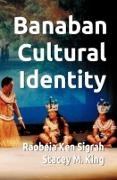Read more
For years, scholars and colonial administrators have linked the Banabans to the I-Kiribati race, shaping the prevailing societal and political landscape of the Banaban people. Nevertheless, true historical accounts and origins have remained closely guarded secrets. Te Aka clan have been notoriously secretive about their identity, keeping their heritage hidden from outsiders.
The turning point comes with Lampert's archaeological findings at the Aka sacred burial ground. These discoveries challenge the existing narrative, suggesting that the Banabans were once part of a distinct and unique race, both physically and culturally, before assimilation processes began to reshape their population.
Banaban Cultural Identity examines Te Aka artifacts, presenting compelling evidence to support the argument that the Banabans' origins have never been accurately documented from their own perspective. Through the words of the Banaban people, passed down by their forefathers for generations, the true story of their ancestry unfolds.
About the author
RAOBEIA KEN SIGRAH1956 - 2021The late Raobeia Ken Sigrah was born on 18 January 1956 on Rabi, Fiji. He identified as a Banaban but held a Fiji passport and later resided in Australia. Known as Ken to his friends, he began his education at the age of seven at Buakonikai Primary School in 1962 and continued at Banaban Primary School until 1967. After passing his Intermediate exams, he attended Niusawa Methodist High School, a Fijian school on nearby Taveuni. In 1980, he studied English for a year at Fulton College in Fiji.Ken studied Banaban culture and customs under the guidance of Banaban elders. He began these studies at the age of 14 as part of his responsibilities as a male clan member, preparing to serve as a clan spokesman in meetings concerning Banaban culture, customs, and genealogies. Ken witnessed the challenges his people faced and represented individual clans in general meetings, exchanging ideas with Banaban elders. His first experience as a clan spokesman was in 1987, followed by further roles in 1994, 1995, and 1996.In 1997, Ken asked Stacey King to assist him in writing a history of Banaba. He aimed to promote Banaban history, culture, and customs, though he had previously struggled to find a sponsor for editing and publishing the work. With many elders having passed away and others in their later years, he hoped to publish this material, gathered over many years, for the benefit of the younger Banaban generation, who are now growing up in a different environment, to help them preserve their culture, heritage, and identity as Banabans.

